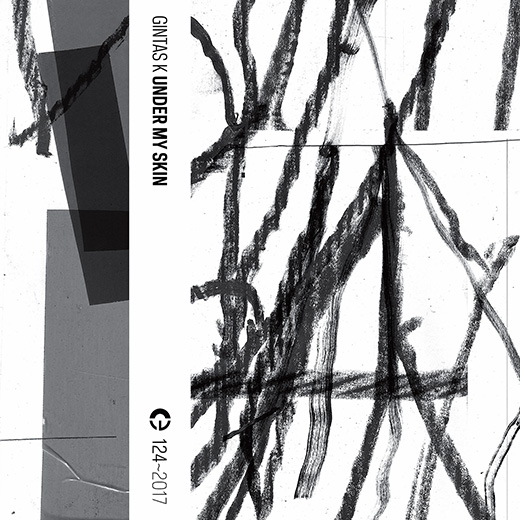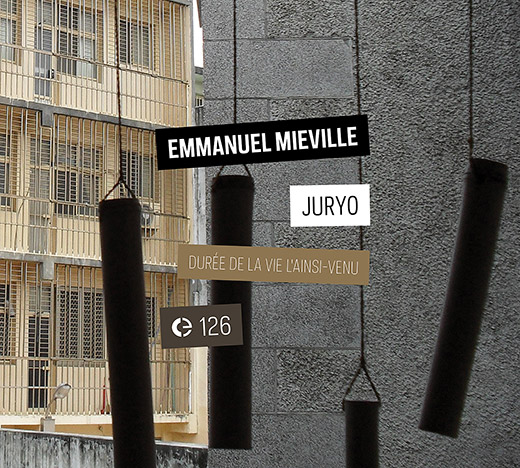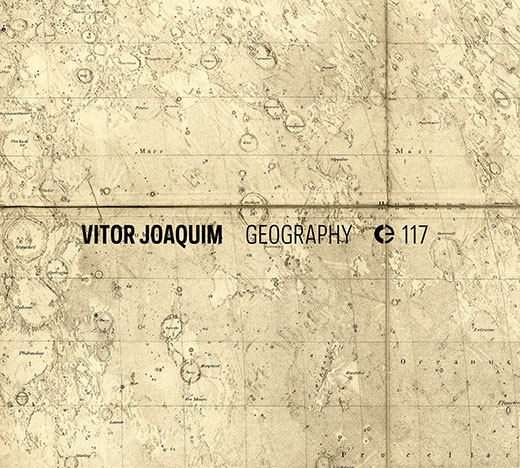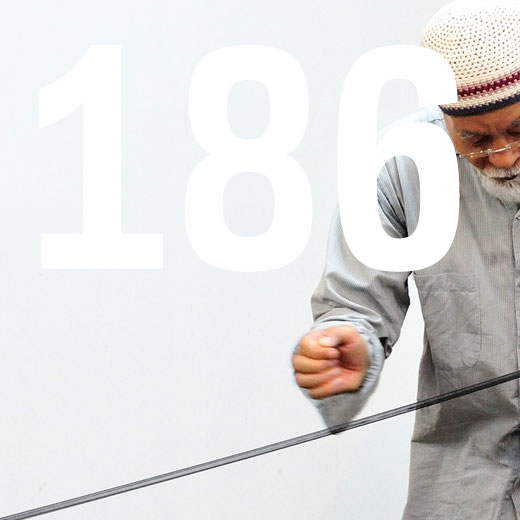
Gintas K, from Lithuania, who has been around for many years, has used no field recordings on his new release. Instead he uses ‘digital synthesis’. I am not sure if an input of any kind is needed here, but maybe it is all in some sort of feedback process, where sounds bounce back and forth against each other. In recent years I have not always been enamoured by his work, mainly because so much seems the same really, and this cassette is no different. Much of what I hear on this one, I also heard before from him. The digital sound processing that can be sweet and melodic (well, not too melodic of course), scratchy, hissy, noisy or looped so that it becomes a rhythm. Think Fennesz, think Alva Noto, think serious computer music and Gintas K does all of that. Every release by him is actually quite good, but it also a bit too much on a repeat mission for me. I wish for something new to happen in his world.
“Juryo: Durée de la vie de l’ainsi-venu†reviewed by Vital

Music releases by Paris born and based composer Emmanuel Mieville are quite apart (Vital Weekly 803 and 1000 for instance) and has a strong emphasis on field recordings and this one is no different. Mieville had training in sound engineering in a film school and later on at INA-GRM, but also played in Javanese gamelan orchestra for two years. He records also sorts of environments and treats them, layers those processed bits together and collages them into a composition. Each of his releases is a bout a specific location. The title of his latest release comes from “the title of this album comes from the Japanese translation of the Sanskrit word and points to a chapter of the Lotus SÅ«tra, one the most famous text of MahÄyÄna Buddhism”. Recordings for the four pieces on this album have been made in Asia, such as Tibetan nuns from Copan monastery and FM radio in Hong Kong, as well as Buddhist chanting for a deceased person and inspired by Bhutto dancers. In all four of these pieces, Mieville uses a fair amount of original sound sources, as in to be recognized by the listener; the chanting, percussive music, radio static and maybe overall street/field recordings, which are treated extensively by him using mostly digital techniques. As such his music stays quite close to the more traditional work of acousmatic composers and this would be easily something that could have been released by Empreintes Digitales, even when I am too much of uninitiated listener to judge if Mieville applies all the proper composing techniques that one ought to apply in that world. I quite enjoyed it, and that’s especially due to the fact that we hear so many of the original field recording, culminating in the final piece, ‘Taisi Funeral’, with its abstract organ like sounds and singing and bell sounds; it sounds like this was a straight recording of a death rite and not a mix of various sound sources. This was altogether an excellent release.
Soon in Crónica: Luca Forcucci’s “The Waste Landâ€
“Geography†reviewed by Indie Rock Mag

L’album devait sortir courant 2012 chez Kvitnu, il aura finalement fallu quatre ans de plus au Portugais et un retour dans le giron du label Crónica qui publiait 10 ans auparavant son merveilleux Flow pour accoucher de cette ode au déterminisme géographique de nos sociétés et de notre espèce, inspirée par le livre “De l’inégalité parmi les sociétés : Essai sur l’homme et l’environnement dans l’histoire” qui valut à l’évolutionniste américain Jared Diamond le Pulitzer en 98. Musicalement, ce concept de schismes évolutifs forgés par les reliefs et les climats, et l’idée d’une résistance de l’être humain aux limitations de son environnement via la technologie notamment s’illustre par moult collisions vacillantes, entre samples radiophoniques et boucles d’instrumentation glitchée (Geography), microsound abstrait et nappes dark ambient (Cantino), drone organique et lancinances jazzy (Cargo), orchestrations aurorales et crépitements angoissés (le cristallin Domo Arigato, sur lequel Vitor Joaquim malmène une dizaine d’instruments samplés durant ses performances avec des musiciens amis). Un bijou d’architecture sonique en constante mutation.
Number 8 of the favourite records of 2016! Via Indie Rock Mag
Futurónica 186

Episode 186 of Futurónica, a broadcast in Rádio Manobras (91.5 MHz in Porto, 18h30) and Rádio Zero (21h GMT, repeating on Tuesday at 01h) airs tomorrow, February 17th.
The playlist of Futurónica 186 is:
- Akio Suzuki, De Koolmees: Suzuki Type – Glass Harmonica (1990, Soundsphere, Het Apollohuis)
- Kate Carr, Holding My Breath in Imaginary Ponds (2016, Endings, Galaverna)
- Kate Carr, Snow storm, ólafsfjörður, Iceland (2016, Endings, Galaverna)
- Kate Carr, Fence in rain, Snæfellsjökull, Iceland (2016, Endings, Galaverna)
- Kate Carr, A long meditation on airports (2016, Endings, Galaverna)
- Akio Suzuki, Analapos B – Multiple Stand, 1973 (1990, Soundsphere, Het Apollohuis)
You can follow Rádio Zero’s broadcasts at radiozero.pt/ouvir and Rádio Manobras at radiomanobras.pt.
New release: µo’s “.appndâ€

.appnd is an EP with six tracks of abstract electronic music composed by Danish composers Jonas Olesen and Morten Riis. The music is edited versions of excerpts from live performances from 2005 to 2010. Jonas Olesen and Morten Riis played a series of improvisational concerts during this period, primarily with analogue instruments, such as modular synthesizers and home-made electronic devices. The recordings are as such, not a documentation of these concerts, but rather radically edited versions of these. The raw sound material went trough a series of digital processing sessions, editing long concert sessions down to the length of a single track. The tracks reveal themselves for the aware an mindful listener as delicate quite endeavors in investigating the relationship between silence and noise, between the audible and the non-audible, between the form and detail. These sonic and aesthetic experiments use the entire dynamics and frequency range, thus making of .appnd an appreciate alternative to the over-consumption that defines the current reality of music listening. Due to the rather extreme frequency content of the audio, this digital version has a different sound than the vinyl.
Jonas Olesen (1979) is a sound artist and composer living and working in Copenhagen, Denmark. He runs the label BIN.
Morten Riis (1980) holds a PhD degree from Aarhus University and is educated in electronic music composition from the Royal Academy of Music, Aarhus. He currently holds a post doc position at Aarhus University, and was director of electronic music composition at the Royal Academy of Music 2013-2014. Besides his academic work he is a very active sound artist having received numerous grants and commissions, released several albums, played numerous concerts and exhibited sound installations in Denmark, Sweden, England, France, Poland, Finland, Germany and China. He has previously released Digital Sound Drawings in Crónica.
.appnd is available as a download from Crónica or Bandcamp.
Soon in Crónica: Emmanuel Mieville’s “Juryo: Durée de la vie de l’ainsi-venuâ€
Gintas K’s “Under My Skin†reviewed by The Wire

Gintas KraptaviÄius is a prolific Lithuanian sound artist whose work exists somewhere on the left side of the glitch continuum. His music is composed of many short-term electronic events, most of which are somewhat melodic in-and-of-themselves. Much of the work here occurs inside a fairly tight sonic field, so it can feel a bit repetitious, but that has more to do with palette than technique. It’s definitely an abstract assemblage, so it just allows a lot of listener drift. Which is not always a bad thing. Byron Coley
New release: Gintas K’s “Under My Skinâ€

We’re very proud to present Gintas K’s (and our own) first tape release, Under My Skin.
Gintas K has been active as a composer, performer and interdisciplinary artist since the 1990s, focusing on experimental digital music aesthetics — overloaded massive structures, static and physically overwhelming frequencies, melodic ambiences, voice and field recordings. Gintas K has released several albums, four of which in Crónica: Lengvai / 60 x one minute audio colours of 2kHz sound (2006), Lovely Banalities (2009), So On (2010), and now Under My Skin.
Under My Skin makes no use of field recordings, and was composed exclusively through digital synthesis. This album is available as a limited-release tape and as a digital download.

